The Enduring Appeal of Sports Cards: A Hobby, Investment, and Cultural Phenomenon
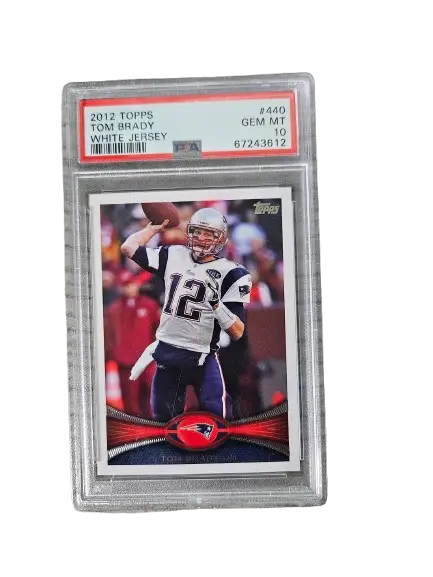
2012 Tom Brady White Jersey PSA Grade 10
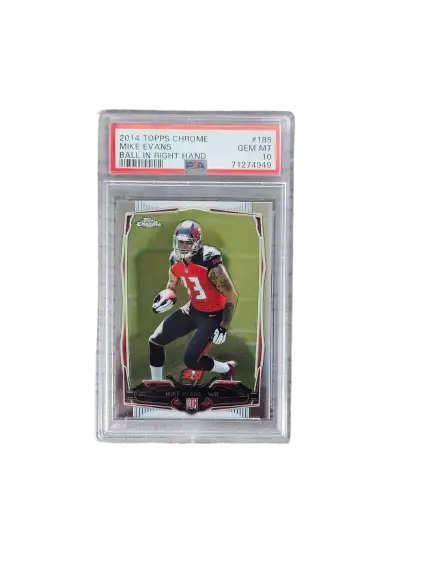
Mike Evans Slab PSA Grade 10
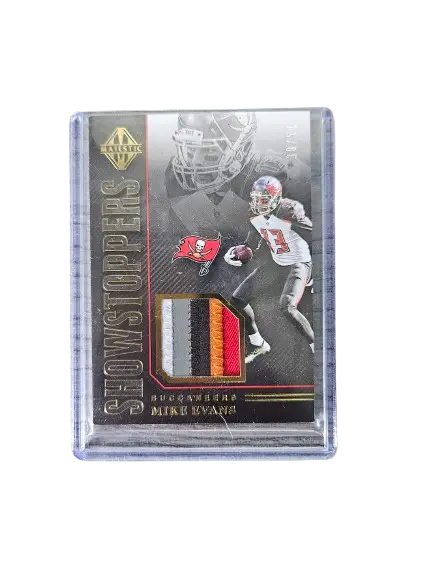
Mike Evans
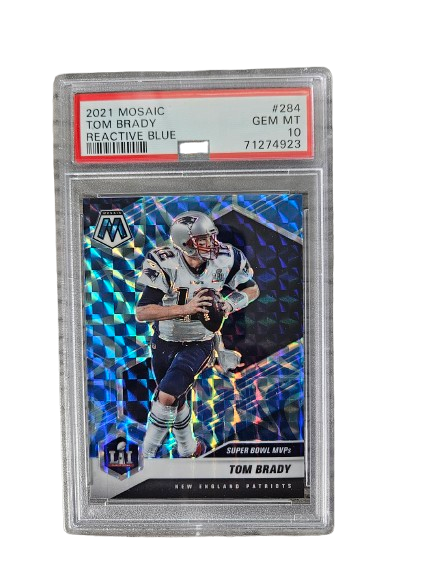
Tom Brady holographic
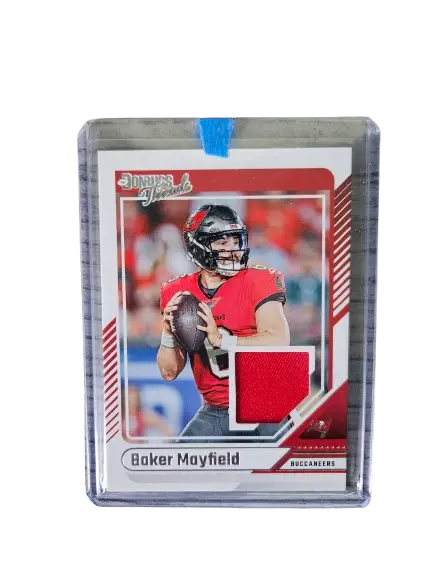
Baker Mayfield
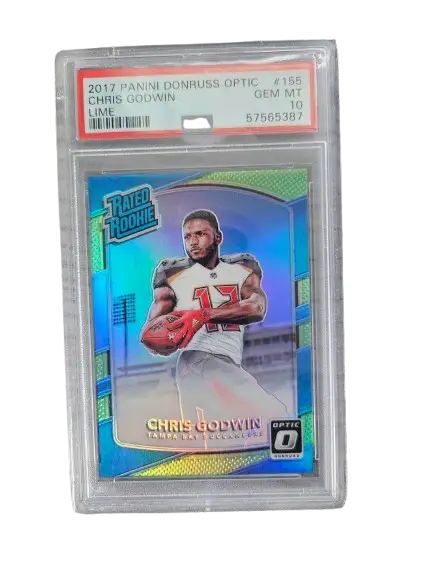
Chris Godwin PSA Grade 10

Joe Burrow 2021 Mosaic PSA 10

Larry Bird 1981 TOPPS PSA Grade 9
Sports cards have long held a unique place in the intersection of sports fandom, collecting, and investing. From humble cardboard beginnings in the early 20th century to today’s high-tech, limited-edition releases, sports cards continue to captivate collectors around the world.
A Brief History
The origins of sports cards date back to the late 1800s, when tobacco companies included baseball cards in cigarette packs as promotional items. These early cards, such as the iconic T206 Honus Wagner, are now considered priceless artifacts of sports history. As the hobby grew, major manufacturers like Topps, Fleer, and Donruss emerged, with Topps establishing itself as the dominant brand through much of the 20th century.
By the 1980s and 1990s, sports card collecting experienced a boom, with mass production leading to a flood of new cards. This era, often called the “junk wax” era, eventually saw a dip in value due to oversupply. However, in the 2010s and 2020s, the market underwent a renaissance, fueled by nostalgia, digital marketing, and a new wave of premium, limited-edition cards.
Types of Sports Cards
Modern sports cards come in various forms:
Base Cards – Standard cards featuring a player’s image, stats, and team.
Rookie Cards – The first official card of a player, often the most valuable.
Autographed Cards – Cards signed by athletes, often limited in number.
Relic Cards – Contain a piece of game-used gear like a jersey or bat.
Parallels and Inserts – Variants with special designs or limited print runs.
Sports cards now span beyond just baseball to include basketball, football, soccer, hockey, and even niche sports and esports.
A Growing Market
In recent years, sports cards have transformed from a childhood hobby to a serious investment vehicle. High-grade rookie cards of athletes like Michael Jordan, LeBron James, and Patrick Mahomes have sold for hundreds of thousands—even millions—of dollars. Grading companies like PSA (Professional Sports Authenticator) and Beckett play a crucial role in determining a card’s value based on condition, centering, corners, edges, and surface.
Online platforms and marketplaces like eBay, Goldin Auctions, and PWCC have made buying, selling, and trading cards more accessible than ever, while social media and YouTube have helped build communities and hype around new releases and box breaks.
Digital Evolution
The industry has also embraced digital innovation. Companies like Panini have introduced blockchain-based digital cards, and the NBA’s Top Shot has pioneered the use of NFTs (non-fungible tokens) to sell highlights as collectible assets. While opinions on digital cards vary, they represent a new frontier in how fans engage with their favorite athletes.
Conclusion
Sports cards are more than just collectibles; they’re time capsules, investments, and personal connections to the sports we love. Whether you’re a lifelong collector or new to the hobby, there’s never been a more exciting time to get involved in the world of sports cards.
Understanding PSA-Graded Sports Cards: The Gold Standard in Card Collecting
In the world of sports card collecting, condition is everything. Whether you’re holding a vintage Mickey Mantle rookie or a modern-day Patrick Mahomes card, its value hinges on how well it has been preserved. That’s where PSA (Professional Sports Authenticator) comes in—a grading service that has become the industry standard for determining a card’s quality and authenticity.
What Is PSA?
PSA is a third-party grading company founded in 1991 that evaluates the condition of trading cards and memorabilia. As part of the Certified Collectibles Group, PSA has graded millions of cards and is considered the most trusted name in sports card authentication. Collectors and investors alike rely on PSA grades to determine a card’s true market value.
How PSA Grading Works
When you submit a card to PSA, trained experts evaluate it based on several key criteria:
Centering – How well the image is positioned on the card.
Corners – Sharpness and integrity of the card’s corners.
Edges – Cleanliness and wear along the card’s borders.
Surface – The overall condition, including gloss, scratches, or print defects.
Cards are graded on a 1–10 scale, with PSA 10 GEM-MT (Gem Mint) being the highest and most desirable. Here’s a quick overview of common grades:
PSA 10 – Gem Mint: Virtually perfect.
PSA 9 – Mint: Only minor flaws, very close to perfect.
PSA 8 – Near Mint-Mint: Small defects or wear.
PSA 5 – Excellent: Noticeable wear, still collectible.
PSA 1 – Poor: Heavy damage, but possibly still valuable if rare.
Each graded card is returned sealed in a tamper-proof, labeled plastic case, known as a “slab,” which includes the card’s grade and a certification number for verification.
Why PSA Grading Matters
Value: PSA-graded cards typically sell for much higher than ungraded equivalents—especially at higher grades.
Authenticity: PSA helps detect fakes or altered cards, a growing concern in a valuable market.
Market Trust: Buyers and sellers both trust PSA as a neutral, authoritative third party.
Inventory Management: PSA’s online database and certification system make it easier to catalog and verify a collection.
Iconic PSA-Graded Sales
Some of the most expensive sports cards in history were graded by PSA. The 1952 Topps Mickey Mantle PSA 9 sold for over $5 million, while a 2003 LeBron James Exquisite rookie patch autograph graded PSA 10 fetched millions at auction. These records reflect the premium placed on high-grade, authenticated cards.
Tips for Collectors
Pre-Screen Your Cards: Examine them closely or use professional pre-grading services before submitting.
Know the Cost: PSA charges based on card value and turnaround time. Bulk submission rates are available but can have longer wait times.
Use PSA’s Pop Report: The population report tells you how many cards have received a specific grade, helping assess rarity.
Watch for Trends: Grading standards can subtly change, and market demand shifts—stay informed.
Conclusion
PSA grading isn’t just about slabbing a card in plastic—it’s about protecting your investment, gaining buyer confidence, and preserving the history of sports culture. Whether you’re a casual collector or a serious investor, understanding PSA grades can help you navigate the hobby with clarity and confidence.

